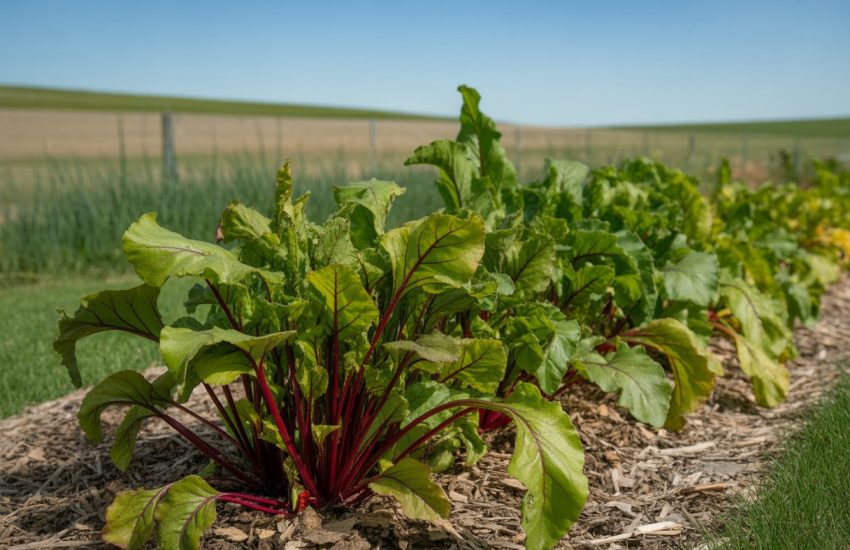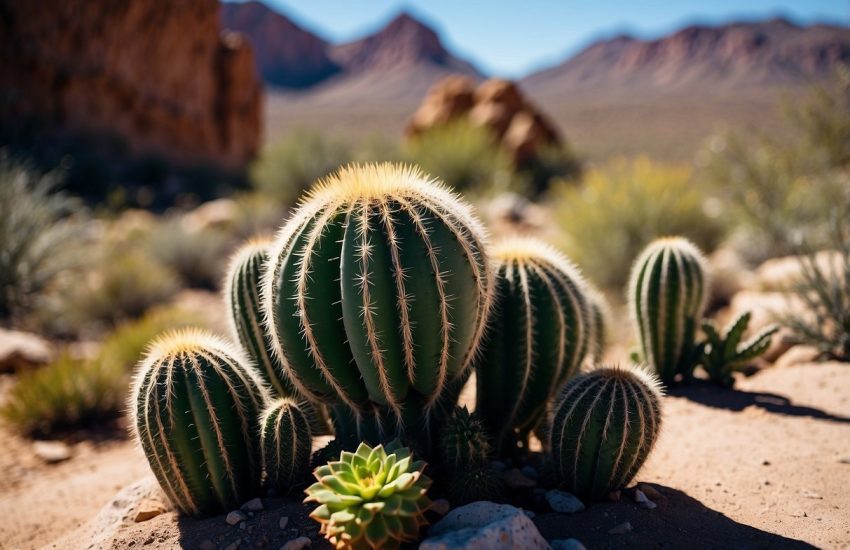Dwarf Umbrella Tree Care: Tips and Tricks for Healthy Growth
The Dwarf Umbrella Tree, also known as Schefflera arboricola, is a popular houseplant that is loved for its lush foliage and easy-care nature. Native to Taiwan, this plant is a member of the Araliaceae family and can grow up to 8 feet tall in its natural habitat. However, when grown indoors, it typically reaches a height of 4-6 feet, making it a perfect choice for those who want a compact plant that doesn’t take up too much space.
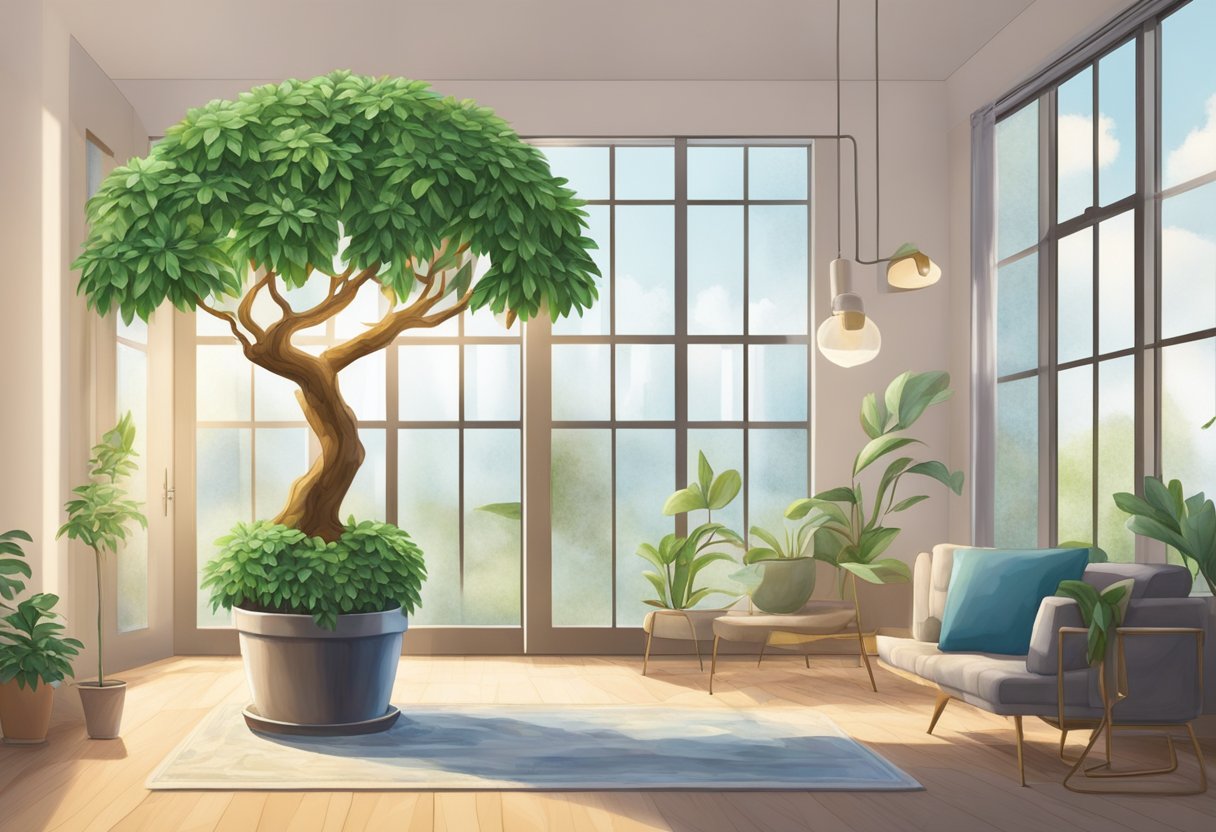
Caring for a Dwarf Umbrella Tree is relatively easy, making it an ideal plant for beginners or those who don’t have a lot of time to devote to plant care. The plant prefers bright, indirect light and should be kept away from direct sunlight, which can scorch its leaves. It also needs to be watered regularly, but not overwatered, as this can lead to root rot. In addition, the plant benefits from occasional fertilization and pruning to keep it looking its best. Overall, with a little bit of attention and care, the Dwarf Umbrella Tree can thrive and add a touch of green to any indoor space.
Choosing the Right Environment

When it comes to dwarf umbrella tree care, selecting the right environment is crucial for the plant’s health and growth. Here are some factors to consider:
Light Requirements
The dwarf umbrella tree thrives in bright, indirect light. Direct sunlight can scorch its leaves, so it’s best to place it near a window that receives filtered sunlight or in a spot that gets bright, indirect light throughout the day. If the plant is not getting enough light, its leaves may turn yellow and drop.
Temperature and Humidity
The umbrella tree prefers temperatures between 60-75°F (15-24°C) and humidity levels of 40-50%. If the air is too dry, the plant may develop brown leaf tips or edges. Using a room humidifier or placing a tray of water near the plant can help increase humidity levels.
Selecting the Proper Soil
The dwarf umbrella tree requires well-draining soil to prevent waterlogged roots, which can lead to root rot. A well-draining soil mix can be made by combining equal parts perlite, peat moss, and vermiculite. Adding organic matter like compost or garden soil can also provide nutrients for the plant. Make sure the pot has drainage holes to allow excess water to escape.
By considering the light, temperature, humidity, and soil needs of the dwarf umbrella tree, you can create an environment that promotes healthy growth and keeps your plant thriving.
Planting and Repotting
Potting and Repotting
When it comes to planting or repotting a Dwarf Umbrella Tree, it is important to choose the right pot size and potting mix. The pot should be at least one size larger than the previous pot, and it should have drainage holes to prevent water from accumulating at the bottom.
The potting mix should be well-draining and rich in nutrients. A good mix for Dwarf Umbrella Trees consists of equal parts of peat moss, perlite, and sand. Before planting or repotting, make sure to moisten the potting mix to help it settle around the plant’s roots.
When repotting, gently remove the plant from its previous pot and loosen the roots. Place the plant in the new pot and fill it with the potting mix, making sure to leave about an inch of space at the top. Water the plant thoroughly after repotting to help settle the soil.
Drainage Considerations
Proper drainage is crucial for Dwarf Umbrella Trees, as they are susceptible to root rot if the soil is too wet. When choosing a pot, make sure it has drainage holes to allow excess water to escape.
It is also important to use a well-draining potting mix to prevent water from accumulating at the bottom of the pot. If the potting mix is too dense, it can lead to waterlogged soil and root rot.
To ensure proper drainage, place a layer of gravel or small rocks at the bottom of the pot before adding the potting mix. This will help water flow freely through the soil and out of the drainage holes.
Overall, proper potting and repotting techniques, as well as good drainage considerations, are essential for the health and longevity of Dwarf Umbrella Trees.
Watering and Feeding
Watering Techniques
Dwarf umbrella trees require consistent moisture to thrive. The best way to water your plant is to wait until the top inch of soil is dry to the touch and then thoroughly saturate the soil until water flows out of the drainage holes. Avoid letting the plant sit in standing water, as this can lead to root rot.
During the growing season, which typically lasts from spring to fall, the plant may need to be watered once or twice a week, depending on the temperature and humidity levels. In the winter, when growth slows down, the plant will require less frequent watering.
It’s important to note that overwatering can be just as harmful as underwatering. Signs of overwatering include yellowing leaves, wilting, and root rot. If you notice these symptoms, reduce the frequency of watering and allow the soil to dry out more between waterings.
Fertilizing Schedule
Proper fertilization is essential for the health and growth of your dwarf umbrella tree. A balanced, water-soluble fertilizer with a ratio of 20-20-20 is recommended. Fertilize your plant once a month during the growing season, following the instructions on the fertilizer package.
Be careful not to over-fertilize, as this can lead to burned roots and foliage. Signs of over-fertilizing include brown leaf tips and edges, stunted growth, and weak stems.
In addition to the 20-20-20 fertilizer, your plant may benefit from additional nutrients, such as iron or magnesium. If you notice yellowing leaves or other signs of nutrient deficiency, consider adding a specialized fertilizer to address the issue.
By following these watering and feeding guidelines, you can help your dwarf umbrella tree thrive and grow into a beautiful, healthy plant.
Pruning and Maintenance
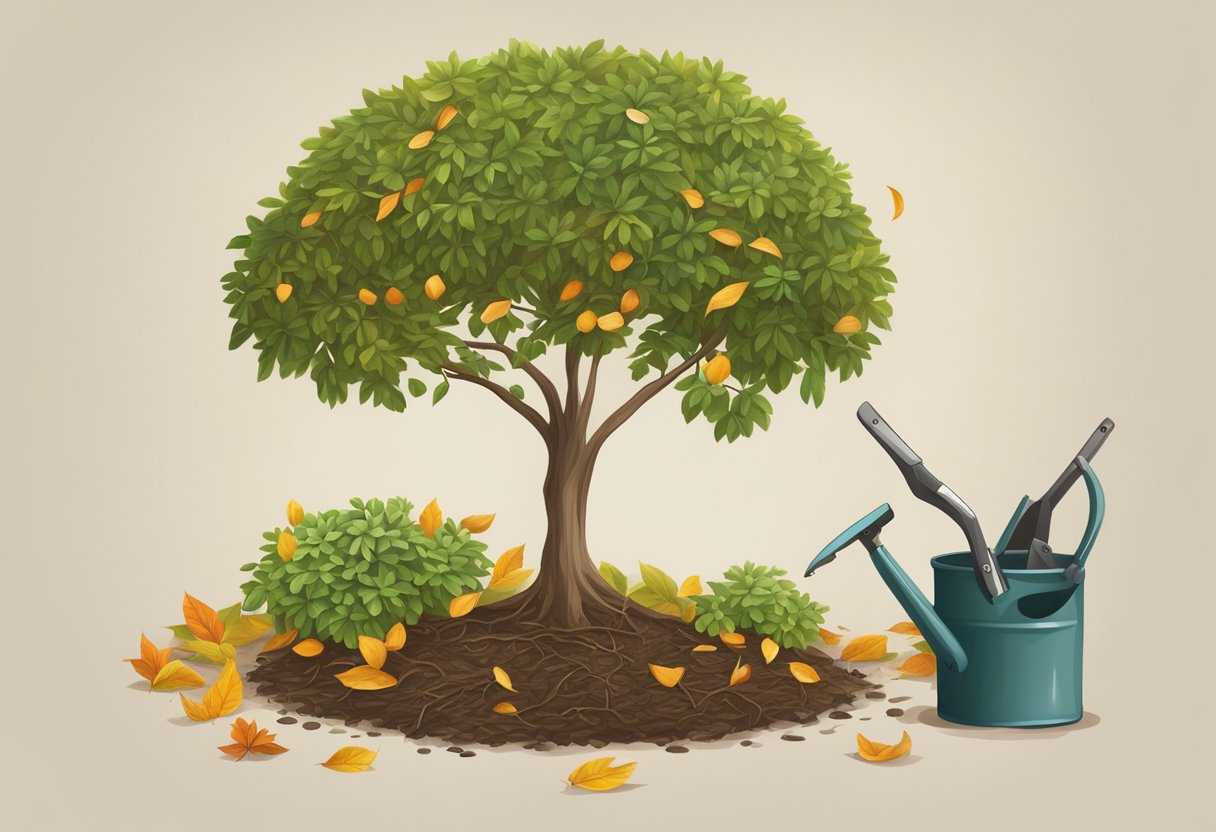
Pruning for Shape
Regular pruning is essential to keep the Dwarf Umbrella Tree looking neat and bushy. Pruning helps to maintain the desired shape and size of the plant. It is recommended to prune the plant during the growing season to encourage bushier growth.
To prune the Dwarf Umbrella Tree, use a sharp pair of pruning shears. Cut back any unwanted or overgrown branches to the desired length. It is important to make clean cuts to prevent damage to the plant. Avoid cutting too close to the trunk as this may cause leaf burn.
Routine Care and Cleaning
In addition to pruning, routine care and cleaning are also important for the health of the Dwarf Umbrella Tree. This includes misting the leaves regularly to increase humidity and prevent leaf drop. Use a spray bottle to mist the leaves with water, making sure to cover both sides of the leaves.
Periodically, wipe the leaves with a damp cloth to remove any dust or debris. This will help to improve the plant’s overall appearance and prevent pests from taking up residence.
Overall, with proper pruning and routine care, the Dwarf Umbrella Tree can thrive and add a touch of greenery to any indoor space.
Propagation Methods

Dwarf umbrella trees can be propagated through stem cuttings or air layering. These methods are relatively easy and can be done by both novice and experienced gardeners.
Stem Cuttings
Stem cuttings are a popular propagation method for dwarf umbrella trees. To propagate through stem cuttings, select a healthy stem with several leaves and a leaf node. Cut the stem at a 45-degree angle and remove the lower leaves, leaving only a few at the top. Dip the cut end in rooting hormone and plant it in a well-draining potting mix. Keep the soil moist and place the cutting in a warm, bright location. After a few weeks, roots should start to form, and the cutting can be transplanted to a larger pot.
Air Layering
Air layering is another propagation method that can be used for dwarf umbrella trees. This method involves creating a small wound on a healthy stem and then wrapping it with moist sphagnum moss. The moss is then covered with plastic wrap and secured with a rubber band. After a few weeks, roots should start to form, and the new plant can be separated from the parent plant and transplanted to a pot. Air layering is an excellent method for propagating larger plants that are difficult to propagate through stem cuttings.
Overall, both stem cuttings and air layering are effective propagation methods for dwarf umbrella trees. By following these simple steps, gardeners can easily propagate their own plants and enjoy the beauty of these trees in their homes or gardens.
Pest and Disease Management
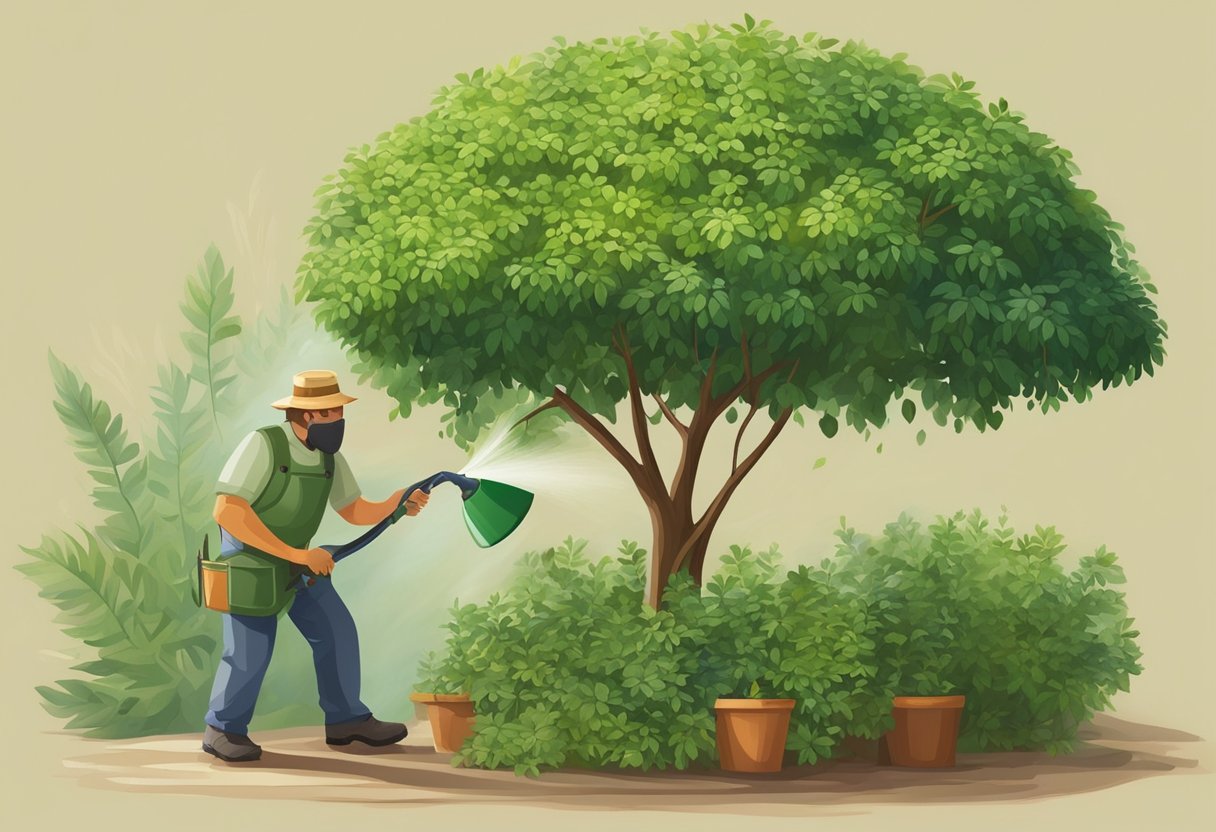
Common Pests
Dwarf umbrella trees are vulnerable to various pests, including spider mites, mealybugs, scale, and aphids. These pests can cause damage to the plant by sucking out sap, which can lead to yellowing leaves, stunted growth, and even death.
To prevent pest infestations, it is essential to keep the plant clean and dust-free. Regularly wiping the leaves with a damp cloth can help remove any dust or debris that can attract pests. In case of infestation, spraying the plant with insecticidal soap or neem oil can be effective in getting rid of the pests.
It is important to note that dwarf umbrella trees are toxic to cats, and therefore, it is crucial to keep them away from the plant.
Disease Prevention
Dwarf umbrella trees are susceptible to root rot, which can be caused by overwatering or poor drainage. To prevent root rot, it is essential to ensure that the soil is well-draining and that the plant is not sitting in water.
Yellowing leaves can also be a sign of disease, and it is crucial to identify the cause of the yellowing to prevent the spread of the disease. In some cases, yellowing leaves can be caused by overwatering, while in others, it can be a sign of a nutrient deficiency.
Regularly inspecting the plant for any signs of pests or diseases and taking appropriate action can help keep the plant healthy and thriving.
Understanding Plant Growth

Growth Patterns
The Dwarf Umbrella Tree, also known as the Schefflera plant, is a compact and slow-growing plant that can reach up to 4-6 feet in height. It has a unique growth pattern that is characterized by its umbrella-like leaves that grow in a circular pattern around the stem. The leaves are usually green, but some varieties such as the Gold Capella have yellow or variegated leaves.
The growth rate of the Dwarf Umbrella Tree is relatively slow, and it can take several years for the plant to reach its full height. However, with proper care and maintenance, the plant can grow to be a beautiful and healthy flowering plant.
Seasonal Changes
The Dwarf Umbrella Tree is a flowering plant that blooms during the growing season, which typically occurs in the spring and summer months. During this time, the plant produces small, white flowers that are arranged in clusters. The flowers are followed by small, green berries that eventually turn black when they are ripe.
As the seasons change, the Dwarf Umbrella Tree may experience some changes in its growth pattern. For example, during the winter months, the plant may enter a period of dormancy where it stops growing and may even lose some of its leaves. However, with proper care and maintenance, the plant can bounce back and continue to grow and thrive.
In conclusion, understanding the growth patterns and seasonal changes of the Dwarf Umbrella Tree is essential for its proper care and maintenance. By providing the plant with the right growing conditions and regular pruning, it can grow to be a beautiful and healthy addition to any home or garden.
Cultural Significance

Native Habitat and History
The Dwarf Umbrella Tree, also known as Schefflera arboricola, is native to Taiwan and has a long history of cultivation in China and Australia. The plant is a member of the Araliaceae family and is a popular choice for indoor and outdoor ornamental gardening due to its attractive foliage and ease of care.
In its native habitat, the Dwarf Umbrella Tree can grow up to 10 meters tall and is commonly found in forests and on rocky slopes. The plant has adapted to a range of conditions, from humid subtropical climates to drier areas with well-drained soil.
Symbolism and Uses
The Dwarf Umbrella Tree has various symbolic meanings and uses across different cultures. In Taiwan, the plant is considered a symbol of good luck and prosperity, and is often given as a gift during the Lunar New Year. The plant is also associated with the money tree in feng shui, and is believed to bring wealth and good fortune.
In addition to its symbolic significance, the Dwarf Umbrella Tree has practical uses as well. The plant has been used in traditional medicine to treat various ailments, such as headaches and coughs. The berries of the plant are also edible and have been used in cooking.
Overall, the Dwarf Umbrella Tree has a rich cultural significance and history, making it a popular choice for both ornamental and practical purposes.
Frequently Asked Questions

How often should I water my Dwarf Umbrella Tree?
Dwarf Umbrella Trees prefer to be kept moderately moist, but not waterlogged. Water the plant thoroughly when the top inch of soil feels dry to the touch. In general, the frequency of watering depends on factors such as the size of the pot, the amount of light and humidity, and the temperature of the room.
What is the ideal location for placing a Dwarf Umbrella Tree indoors?
Dwarf Umbrella Trees thrive in bright, indirect light. They can also tolerate some direct sunlight, but too much can scorch the leaves. Place the plant near a window that receives filtered light or in a well-lit room. Keep the plant away from drafts and cold temperatures.
Is it necessary to mist a Dwarf Umbrella Tree, and if so, how frequently?
Misting can help increase the humidity around the plant, which can be beneficial, especially in dry indoor environments. However, it is not necessary to mist a Dwarf Umbrella Tree regularly. If the air in your home is particularly dry, mist the plant once or twice a week.
What are the common problems associated with Dwarf Umbrella Trees and how can I prevent them?
Common problems with Dwarf Umbrella Trees include yellowing or dropping leaves, root rot, and pest infestations. To prevent these issues, make sure the plant is not overwatered, and the soil is well-draining. Check the plant regularly for signs of pests such as spider mites or mealybugs, and treat them promptly with insecticidal soap or neem oil.
How do I propagate an Umbrella Plant effectively?
Dwarf Umbrella Trees can be propagated through stem cuttings. Take a cutting that is several inches long and has a few leaves. Remove the lower leaves and dip the cut end in rooting hormone powder. Plant the cutting in a well-draining soil mix, and keep it moist until roots develop.
What maximum height can a Dwarf Umbrella Tree reach, and how fast does it grow?
Dwarf Umbrella Trees can grow up to 6 feet tall, but they can be pruned to maintain a smaller size. The plant grows relatively slowly, and it may take several years to reach its full height.

